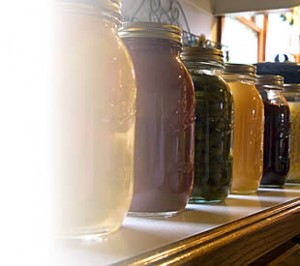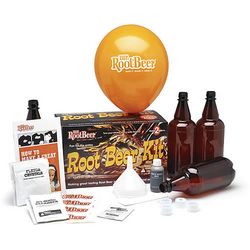Up until 1977 I was, like everyone else I knew, getting my food from the local supermarket. Bruce and I and our young first son were living in an aging factory town but we knew there had to be a better, healthier, saner way to live. We began the search for a place in the country and against all odds and with more than our fair share of luck and answered prayers, found ourselves just a few, short months later living in an old farmhouse on a beautiful farm way out in the hinterlands of Western Massachusetts.

My first forays into cooking from scratch were not always successful. I know our recently acquired flock of chickens appreciated my failed attempts at bread making but no else did. I had no guides except for a bunch of back copies of Mother Earth News. It was in one of those issues that the idea of making yogurt first came to me. My son loved yogurt was but it was only available in individual cups and, for my tight pocket book, it was fairly expensive. It also required a trip to town. As I had no car, that was out of the question. We had just added a family cow to our growing farmstead so it only made sense to try my hand at making yogurt.
I first made yogurt on an old cook stove. The heat was impossible to regulate but I fiddled with moving the pan around on the farthest corner and finally getting the milk to steam slightly without coming to a full boil. I let it cool to room temperature and added a couple of tablespoons of plain yogurt as a starter. I found an out-of-the-way spot under the stove that was warm enough to incubate my canning jar full of inoculated milk and I set it there. I was elated, jubilant, ecstatic, when, six hours later I had yogurt. Real, honest to goodness, not-to-be-fed-to-the-chickens food that I could present to my family.
I was hooked. Successful yogurt making led me to try other things. I kept at the bread baking, the soup simmering. Working at the labor intensive but incredibly rewarding task of feeding my family food that we grew, preserved and prepared ourselves made me realize one day that I could actually cook. Yogurt was my gateway food; the one that showed me just what was possible.
What’s Most Important?
I love to make yogurt. We no longer have a cow but we do have a neighbor who has a raw milk CSA that offers rich Jersey milk. Another neighbor has unlimited supplies of goat milk so I can still make yogurt with milk I feel good about. My process has not changed much over time. I have learned some tricks to ensure each batch is successful.
Hygiene matters. Nothing accounts for so many failed batches of yogurt as errant microbes. The container you use, the spoons and your hands must be scrupulously clean.

Keeping the room temperature (and so the yogurt temperature) at an even level is also important. I finally invested in a yogurt maker as a house heated with wood and propane has wide fluctuations in temperature. There are a lot of options. You can get an electric yogurt maker or a non-electric incubator that is heavily insulated to hold temperature. I have both kinds. My next purchase may be the larger, 2 quart incubator that heats the milk and incubates in one container. It will also make sour cream and buttermilk with the appropriate cultures added.
Make Yogurt Like I Do
Until I get that, here’s my process. You start with a quart of milk. Any kind will do as long as it’s not ultra-pasteurized. I have made it from the milk of both cows and goats and a friend of mine makes excellent yogurt from ewe’s milk. You can also use low-fat, soy, reconstituted powdered or canned milk. Put it on to warm over medium low heat. If the milk scorches it will taste terrible. While the milk heats I get out my incubating container. I wash it, along with my hands and any utensils I plan to use, in hot soapy water and rinse very well. I then scald everything (except my hands) with boiling water. This one step will save all kinds of trouble down the road.

I don’t use my milk thermometer to check the temperature of the milk but if you do, aim for 180 degrees. If you don’t have a thermometer you can just watch for a fine steam to begin to rise from the surface of the milk. You have to be diligent and not let the milk boil. Now set the milk aside to cool. It should be no hotter than 110 degrees when you add the culture. The culture is a living thing and it’s killed by excessive heat. If the temperature falls below 90 degrees the yogurt will take forever to set up. This temperature window is the reason to consider a yogurt maker. It will take the worry out of the process. I add two to three tablespoons of yogurt or a packet of powdered culture to a 1 quart glass measure and top it with one cup of warm milk. I give this a good whisk to incorporate the starter and add it back to the pan, whisk again and pour it into my incubating container.
Troubleshooting Homemade Yogurt
I rarely have problems with making yogurt. Occasionally, people using store-bought milk complain that their yogurt is too runny. Thicker yogurt can be made by adding 1/3 cup of powdered milk to whatever milk you’re using. I use yogurt from the previous batch to inoculate the next batch but after a few months, the quality of the yogurt declines. I then start over with new culture. I think the older culture gets contaminated with other kitchen bacteria.

The whole thing, aside from the time the yogurt takes to set up, takes less than a half an hour from start to finish and the yogurt is fabulous. It can be eaten as is or dressed up with fruit or maple syrup or honey. The last bit of preserves from a jar is a nice addition. I love some vanilla in my yogurt. You can also freeze yogurt or blend it with frozen fruit for a smoothie. Plain yogurt can be substituted for sour cream in many recipes, reducing the calories but not affecting the taste or impacting texture.
If you prefer savory yogurts to sweet you can hang your yogurt in a cheesecloth bag and let some of the liquid drain into a bowl. The yogurt left behind is yogurt cheese. (Use the liquid in breads or sauces or drink it chilled.)
Yogurt cheese can be used like cream cheese and dressed up with herbs. We love it whipped with chives and served with baked potatoes. Just be forewarned. You begin with yogurt and the next thing you know there will bread rising on the counter, cheese aging in the basement and granola drying in the dehydrator. You might also need to invest in clothes with a looser waistband!































